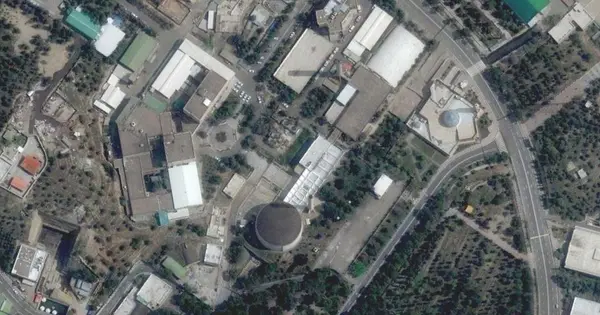From Partnership to Conflict: How the US Initially Supported Iran's Nuclear Program Before Launching Strikes
)
For decades, the relationship between the United States and Iran has been fraught with tension and shifting alliances. A lesser-known chapter in this complex history involves the US's initial involvement in Iran's nuclear program during the 1960s – a period when Washington actively assisted in developing the country's nuclear capabilities. This seemingly contradictory history culminated in a dramatic turn of events 65 years later, when US B-2 bombers targeted Iranian nuclear facilities.
The Early Partnership: Seeds of Nuclear Ambition
In the 1960s, during the reign of Shah Mohammad Reza Pahlavi, Iran was a key strategic ally of the United States in the Middle East. The US, eager to bolster Iran's military and industrial infrastructure, provided significant technological assistance, including expertise and equipment related to nuclear energy. This collaboration was framed as a means to promote peaceful applications of nuclear power, such as electricity generation and medical advancements. The US Atomic Energy Commission played a pivotal role in this partnership, facilitating the transfer of knowledge and resources.
The Shah, ambitious to modernize Iran and assert its regional power, embraced the nuclear program with enthusiasm. He envisioned Iran becoming a leader in nuclear technology, contributing to the country's economic growth and strategic independence. American support was instrumental in laying the groundwork for Iran's nuclear infrastructure, including the construction of research reactors and the training of Iranian scientists and engineers.
Shifting Sands: The Islamic Revolution and Growing Concerns
However, the 1979 Islamic Revolution fundamentally altered the geopolitical landscape. The overthrow of the Shah and the establishment of an Islamic Republic under Ayatollah Ruhollah Khomeini marked a dramatic shift in Iran's foreign policy and its relationship with the United States. The revolution ushered in an era of deep distrust and animosity between the two nations.
As Iran's nuclear program continued to develop under the new regime, concerns grew in the US and internationally about its potential military applications. The possibility of Iran acquiring nuclear weapons became a major source of tension, leading to increasingly stringent sanctions and diplomatic pressure.
The Recent Strikes: A Full Circle?
The recent strikes on Iranian nuclear facilities, reportedly carried out by US B-2 bombers, represent a stark culmination of this decades-long, convoluted history. Targeting facilities in Natanz, Isfahan, and Fordow underscores the US's determination to prevent Iran from developing nuclear weapons capabilities. These actions have significantly escalated tensions in the region and raised fears of a wider conflict.
The irony of the situation is palpable: the US initially facilitated Iran's entry into the realm of nuclear technology, only to later resort to military action to curb its progress. This historical context highlights the complexities of US-Iran relations and the enduring challenges in achieving a stable and peaceful resolution to their disputes. The future remains uncertain, but the events of the past serve as a stark reminder of the potential consequences of shifting alliances and unresolved tensions.






